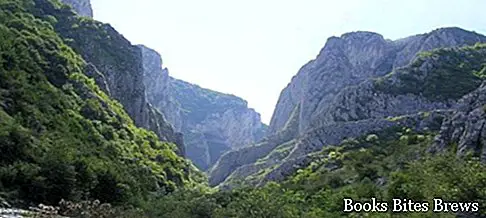Located in Transylvania, the historical region that constitutes the central and western part of Romania, the Apuseni Mountains are a mountain range of the Western Carpathians, comprising the highest peaks.
Apuseni Mountains
It is a large limestone complex of crushed mountains, rounded at the top and with volcanic reliefs, which for its particularity attracts many tourists in search of fairy-tale landscapes characterized by numerous karst phenomena.
The central part, which is the highest one comprising in Bihor Mountains and with an average height between 1000 and 1200 meters, culminates with the crystalline schistose massif of Cucurbata Mare, a barrier that exceeds 1800 meters, prolonged to the north by Monte Vladeasa and to the east from the Muntele Mare.
The valleys are inhospitable, with the peaks surrounding them devoid of vegetation.
The villages are grouped at an altitude of 1300 meters, while the houses, with their very large roofs, are not built side by side but scattered within a few tens of kilometers.
The Apuseni Mountains stand out not only for their ethnographic richness and, in particular, for the manifestations of folklore of very ancient origins, but also for the landscape of extraordinary beauty, rich in karst phenomena, including the splendid Scarisoara cave.
In addition to this, it is worth mentioning the magnificent Slatina waterfall, with its limestone and petrifying waters, the Padiz karst plateau, riddled with aven, the five floors of limestone concretions of the Meziad cave.
The citadels of Ponor are very particular, three huge sinkholes through which an underground river, after a jump of 30 meters, formed an opening 76 meters high.
The intermittent fountains of Ponorel are accompanied by underground voices, a peculiarity from which the name of screaming caves is derived.
The Detunata is a vertical basalt wall that evokes the shape of a huge sea wave.
The Romanian Western Carpathians are very original for their fragmentation, the variety of internal depressions and the passes, as well as for the presence of real altitude platforms where human life is concentrated.
Recommended readings- Bucharest (Romania): what to see in the capital
- Apuseni (Romania): the highest mountains in the Western Carpathians
- Romania: useful information
These areas have never been isolated from the rest of the country, thanks above all to the presence of rich mineral deposits.




